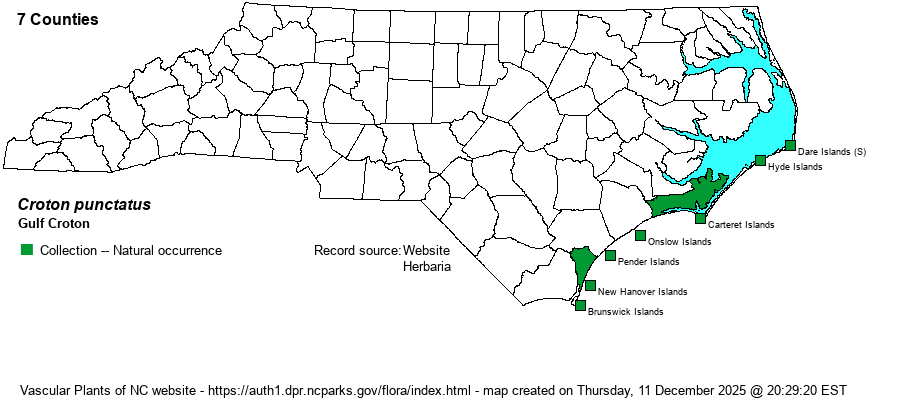| Author | Jacquin | |
| Distribution | Southern 2/3rds of the Outer Banks and other barrier islands; rare on the adjacent mainland. Salvo in Dare County is the species' northern range limit.
Maritime -- NC to southern FL and TX; Mex., W.I., C.A., northern S.A. | |
| Abundance | Frequent to common, along the southern 2/3rds of the coast. | |
| Habitat | Maritime dunes, dune hollows, maritime dry grasslands. |
| Phenology | Flowering and fruiting late May-November. | |
| Identification | Gulf Croton grows 1.5-3 feet tall, looking like a small shrub (though is an herb that dies back each fall) and is covered with stellate hairs, giving the plant a very pale green appearance. Leaves are ovate (with entire margins) and up to 1.5 inches wide, and the undersides have a red-brown dot at the center of each stellate hair. Inflorescences are small and in leaf axils. It has a layered, flat-topped look, generally wider than tall; and with its very pale coloration, it is unmistakable and often readily found in its dune habitats. | |
| Taxonomic Comments | None
| |
| Other Common Name(s) | Beach-tea, Silverleaf Croton | |
| State Rank | S3S4 | |
| Global Rank | G5 | |
| State Status | | |
| US Status | | |
| USACE-agcp | | |
| USACE-emp | | |

